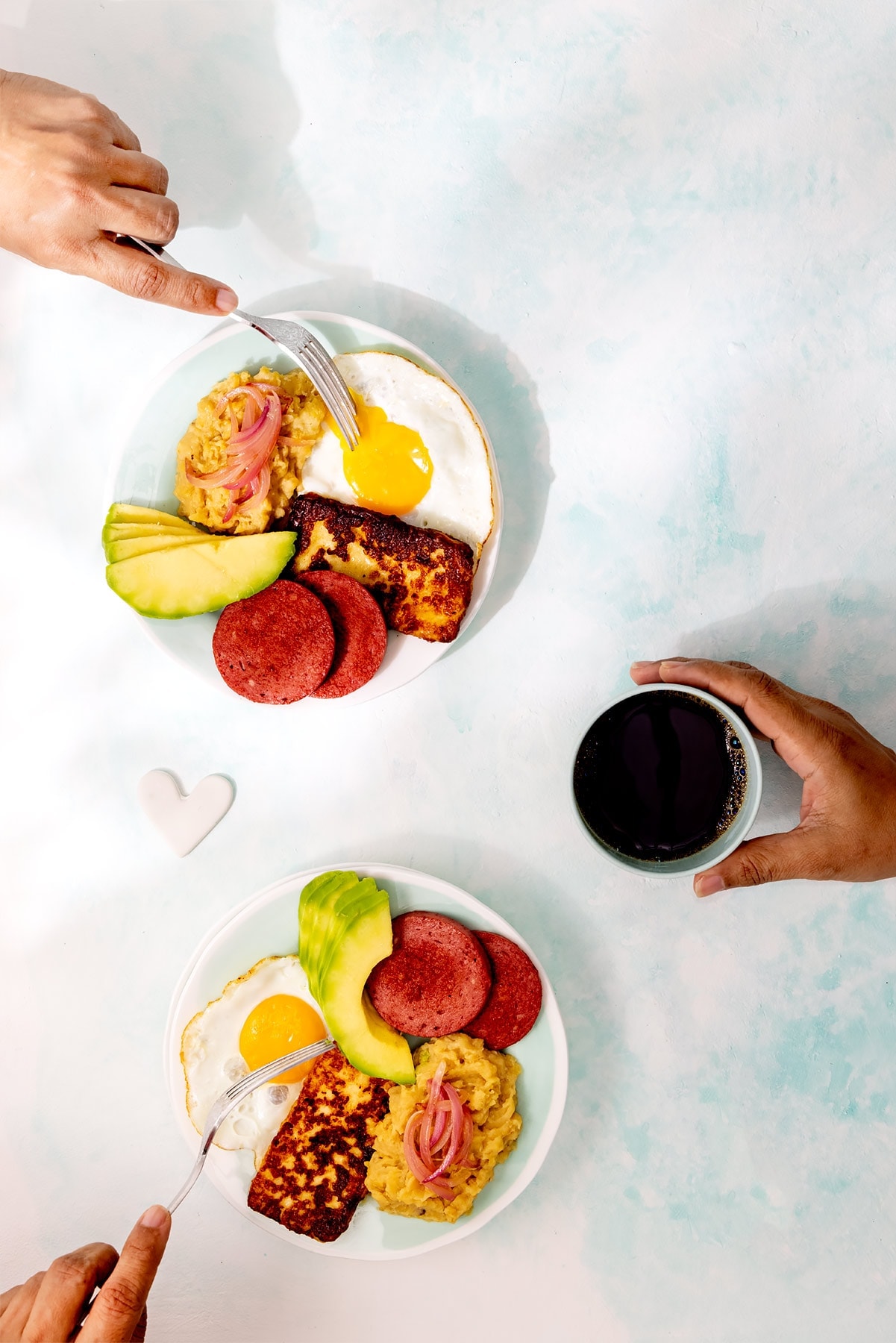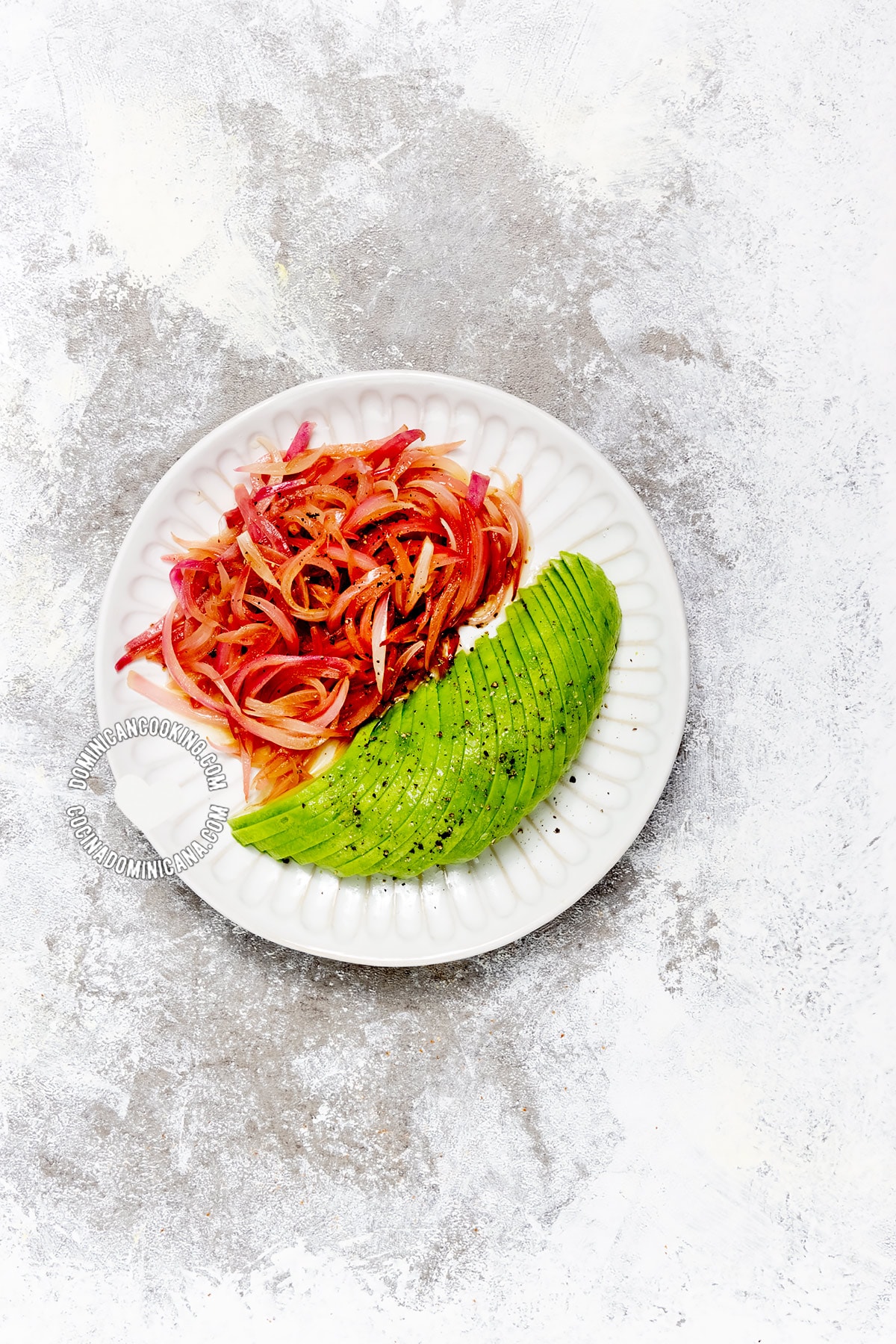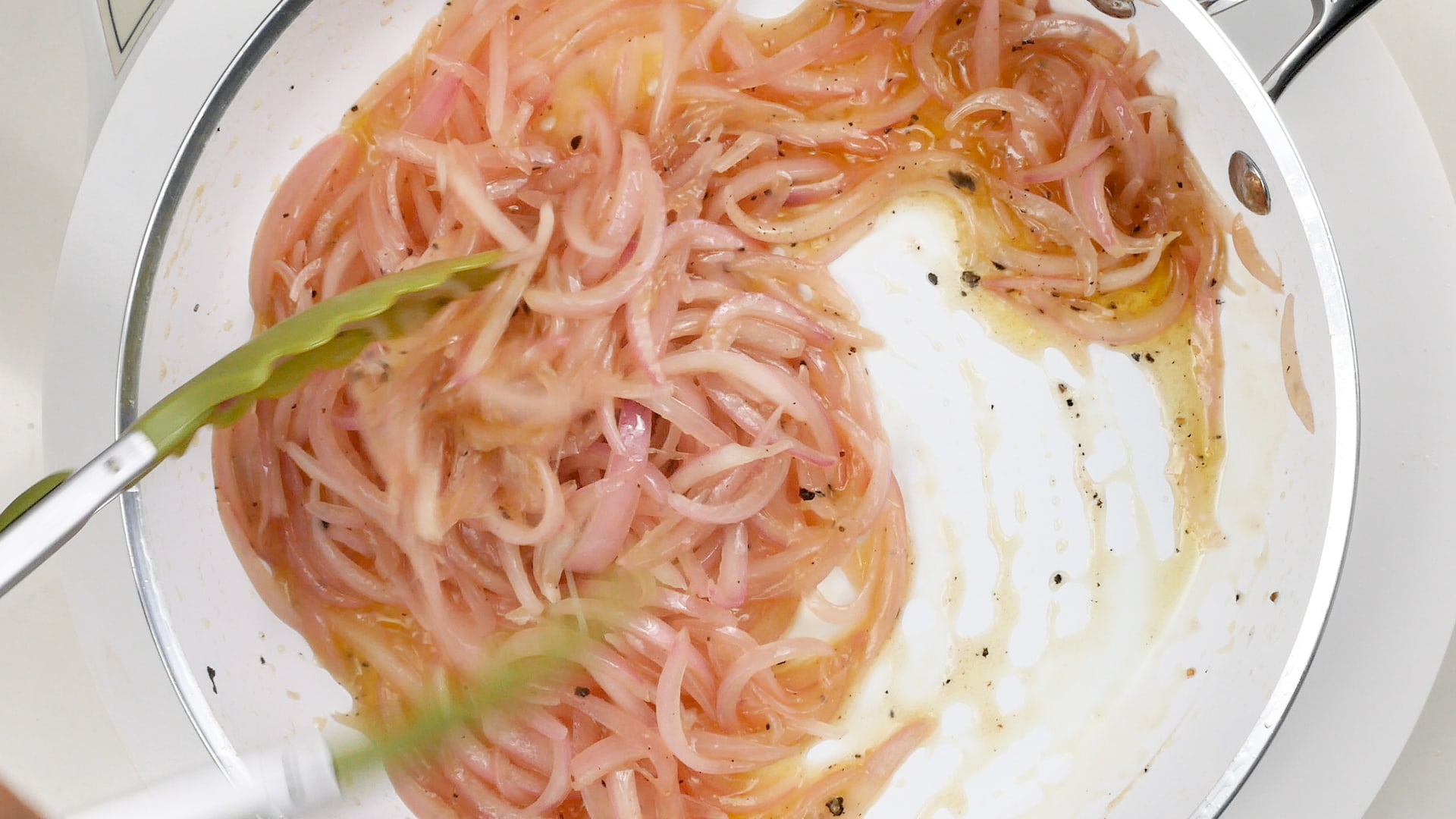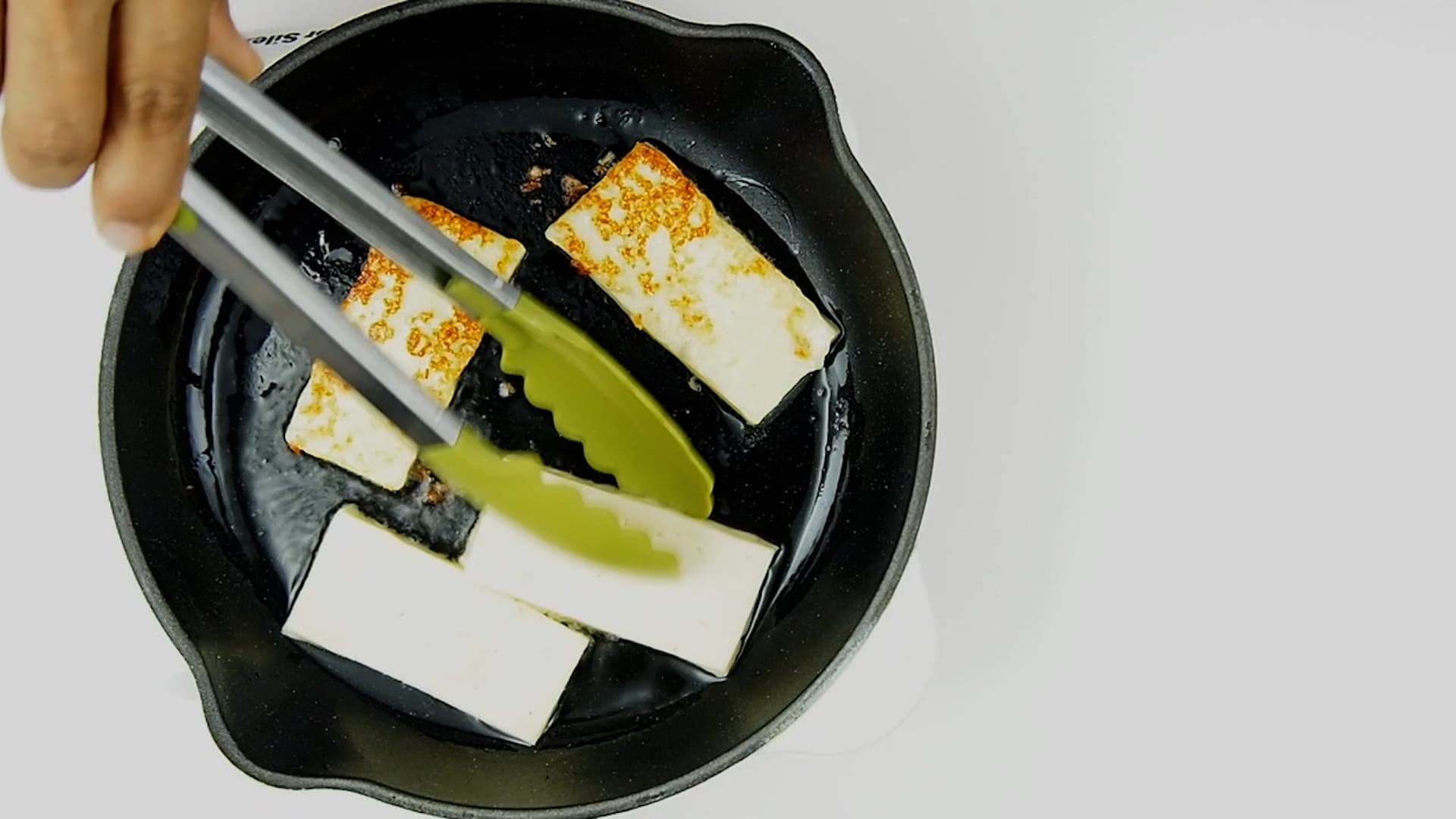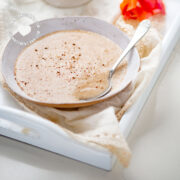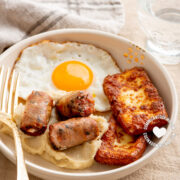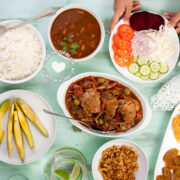The iconic Dominican breakfast, Los Tres Golpes is one of the best representations of our gastronomy and a must-try breakfast.
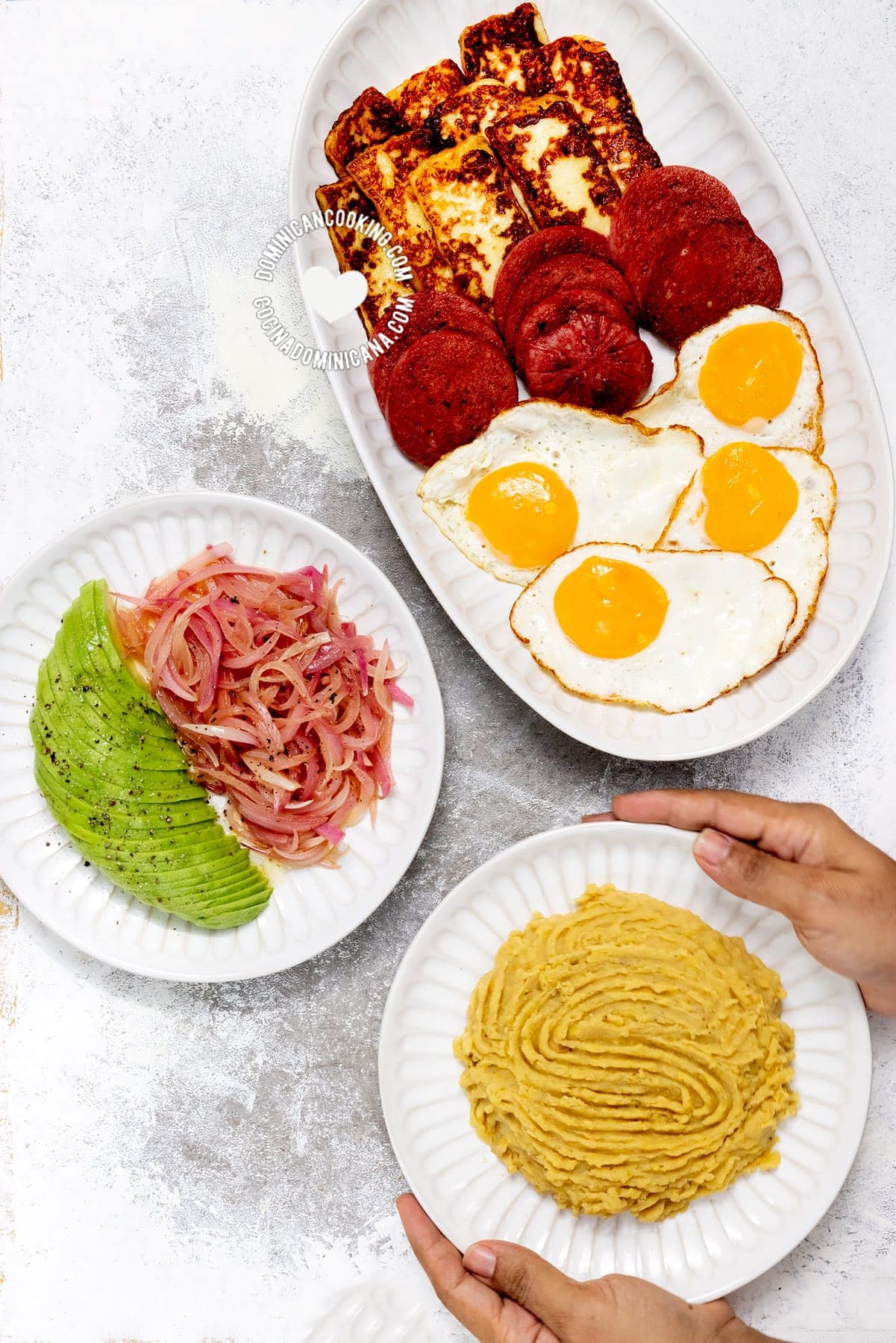
Why we ❤️ it
Generally, breakfast in the Dominican Republic nowadays is a light meal, as most of us have moved out of the campos and into sedentary jobs that do not require a heavy morning meal with a long preparation. But for Dominicans, the iconic Dominican breakfast meal that represents our gastronomy is the colorful, flavorful mangú con los tres golpes.
What is "los tres golpes"?
Los tres golpes is the name given by Dominicans to our iconic breakfast meal consisting of fried Dominican-style salami, fried cheese, and fried eggs served alongside mangú.
Los tres golpes is, therefore, not one, but three dishes (cheese, eggs, and salami), and served with mangú garnished with Dominican-style sauteed onions. If available, avocado is very welcome, but it isn't part of the original combination (some people call it los cuatro golpes).
Mangú
Mangú is mashed plantains made smooth and creamy with the addition liquid (usually water) and fat (typically oil or butter, although originally lard), garnished with Dominican-style sauteed red onions. We have a very extensive recipe with a lot of information about it, so click that link to see it.
Dominican-style fried salami
Outside the Dominican Republic, fried salami may sound a bit crazy, so in case you didn't know: it bears little resemblance to Italian salame (plural is salami), and just as little to Spanish salchichón, as it's also named in our country. You can read more about it, and about its history.
Queso frito
Queso frito (fried cheese) is made with the aptly named queso de freír (cheese for frying). It is an unripened, semi-hard cheese made from cow milk. It has a very high melting point, so it's quite easy to fry without melting, at least good quality queso de freír. You can find out more about it here, along with a trick to prevent your cheese from melting.
If you cannot get queso de freír, try to find plain halloumi (no mint!), it's as close you'll get to the right texture and flavor.
Huevos fritos
Sunny-side-up eggs, with a crispy edge for some people. Just that simple.
Why the name?
The name "Los Tres Golpes" for things that identify us as Dominican has a long history. It may have originally come from Perico ripiao, the predecessor to Merengue, our national music.
Perico ripiao was formed by tres golpes (three beats), which were the güira [Dominican instrument], tambora [drum] and accordion; while the symbols of the country were God, country and freedom [Dios, patria y libertad]. These were questions that any military officer could ask citizens to confirm Dominican nationality [my translation].
[1]
Soon the term "los tres golpes" was adopted by Dominicans for an even more ominous purpose during the Trujillo dictatorship. [2]
The youth felt the state of repression the most, because at night mixed patrols would go out, made up of members of the armed forces, who demanded that passers-by present their identity documents. All Dominicans had to carry these documents, and the people, in a sarcastic way, baptized them with the name of "los tres golpes"; that is, the Personal Identity card, the Dominican Party card, and the Mandatory Military Service card [my translation].
[3]
With the name already in the public consciousness when post-dictatorship salami (see the history of Dominican salami) became a staple nationwide, we were ready for a new "los tres golpes", one we are glad represents us now.
A quick but important note is that I --and many other writers-- have always translated it as "the three strikes", but if its origin lies in music, perhaps an appropriate translation for los tres golpes should be "the three beats". What do you think?
About the recipe
As mentioned above, mangú con los tres golpes breakfast is not just one dish, but a whole meal. This is why you can find the components in two separate recipes in our blog. We've combined it here so you can find it more easily.

Recipe
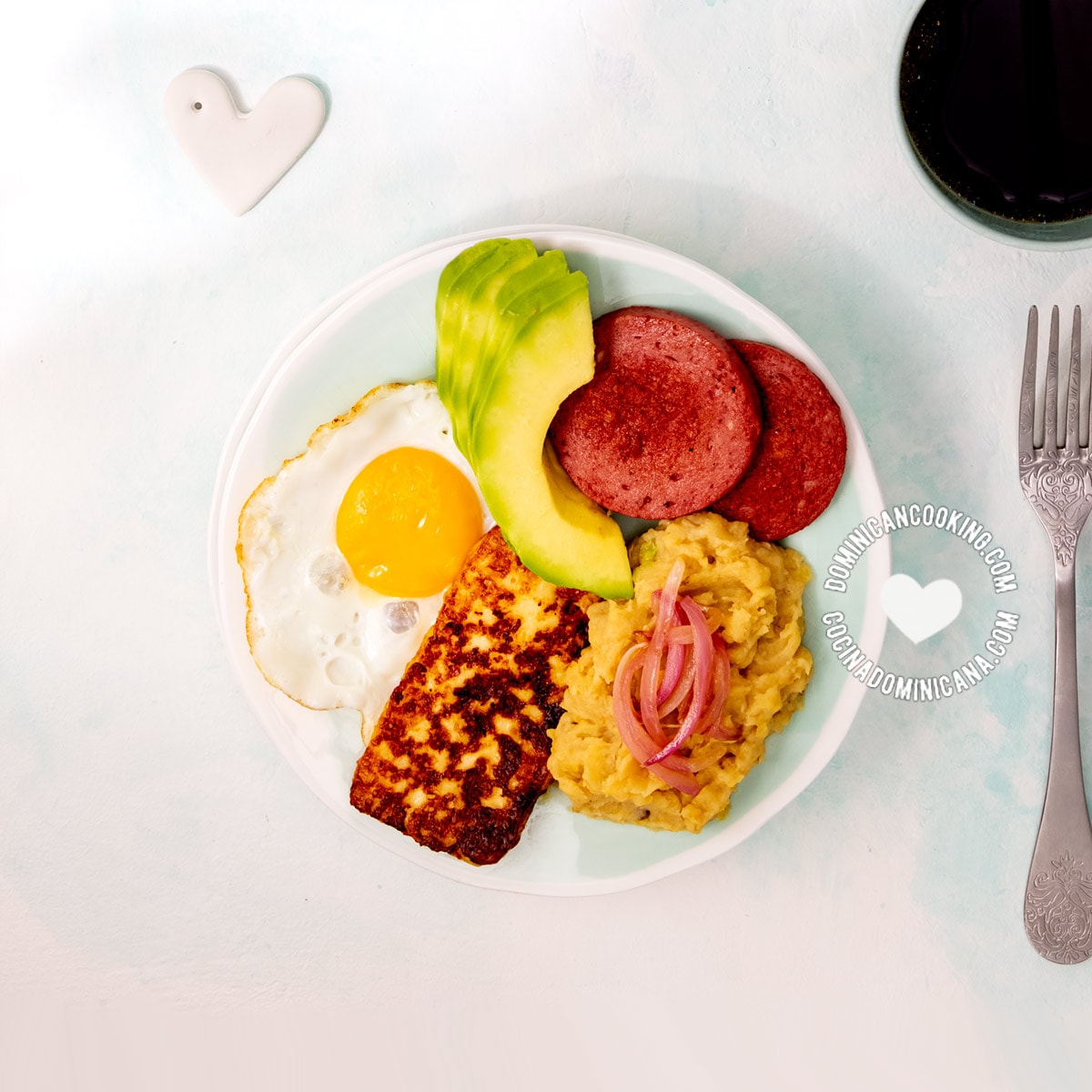
[Recipe + Video] Los Tres Golpes: Dominican Breakfast
Ingredients
To make the plantains
Red onions with vinegar
- 4 tablespoons olive oil
- 2 large red onion, sliced thinly
- 2 tablespoons apple cider vinegar
- 1 teaspoon salt, (or more, to taste)
Eggs
- 12 egg (medium)
- 1 cup oil for frying, will also be used for frying the salami and cheese
Cheese
- 1 pound queso de freir, (or plain halloumi)
Salami
- 1 pound Dominican-style salami, cut into thin slices
Instructions
Plantains
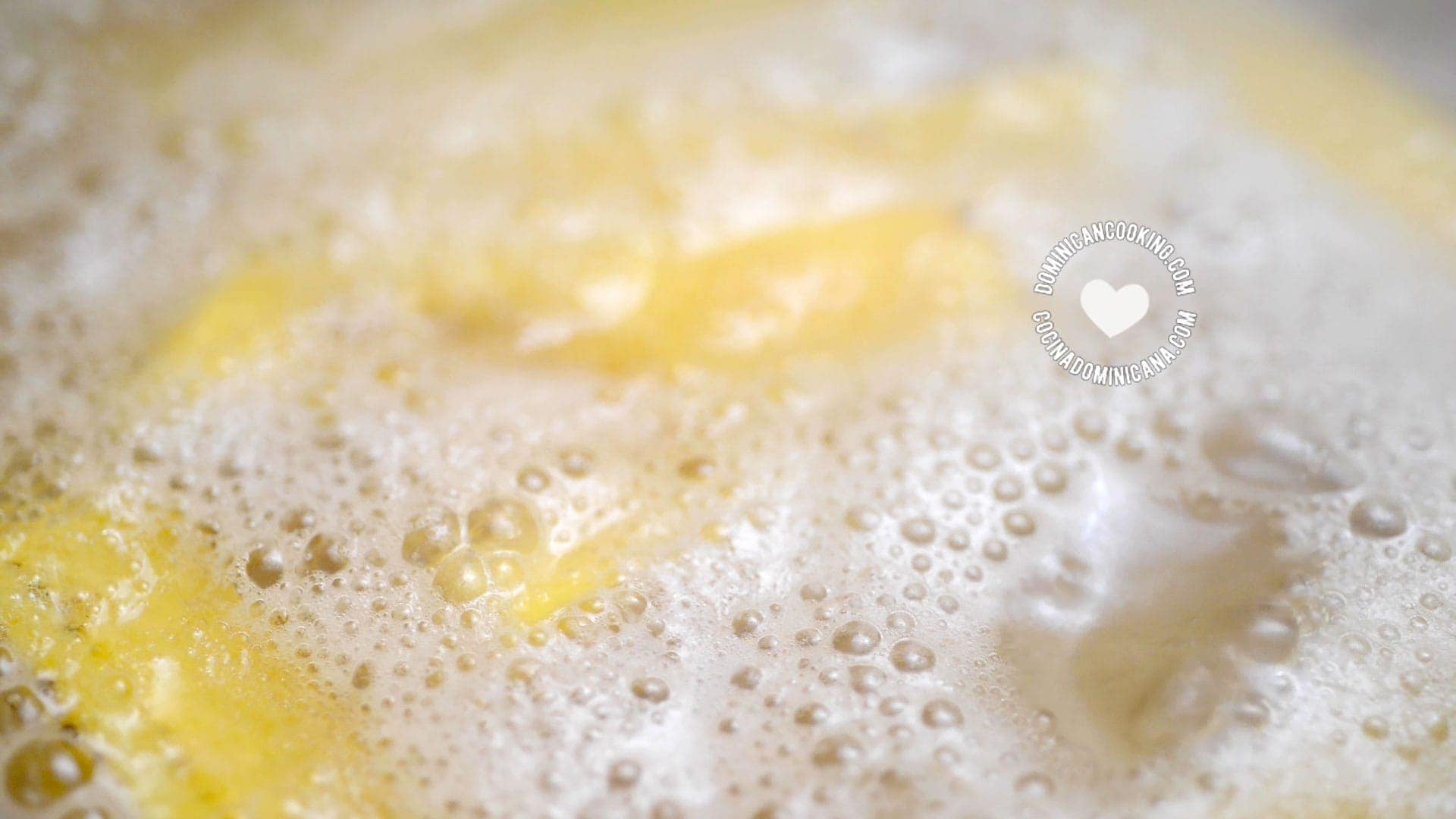 See the instructions and video for mangú.
See the instructions and video for mangú.
Onions with vinegar
Queso
Eggs
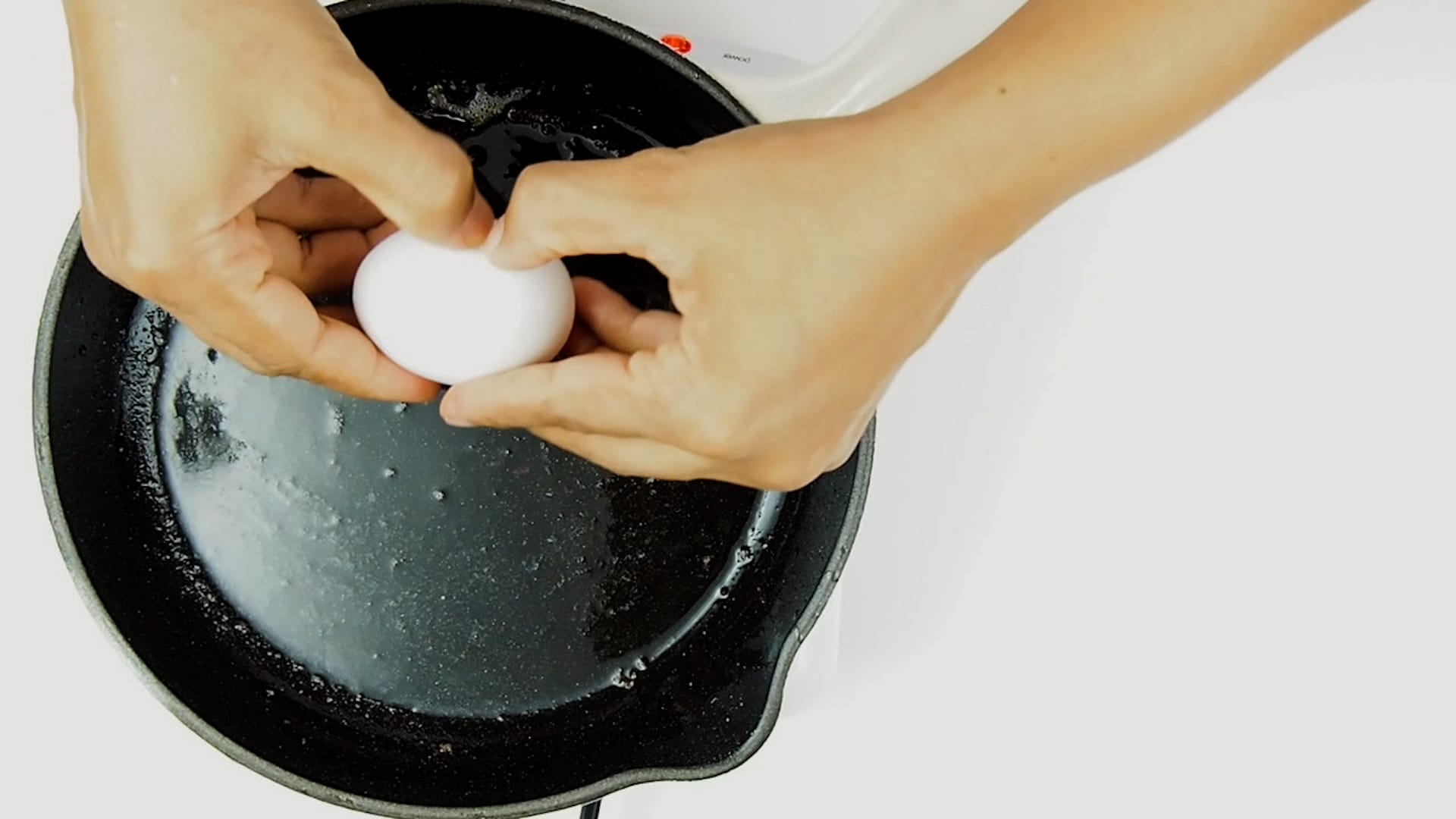 Heat oil over medium heat in a non-stick frying pan. Fry the eggs sunny-side-up one by one.
Heat oil over medium heat in a non-stick frying pan. Fry the eggs sunny-side-up one by one.
Salami
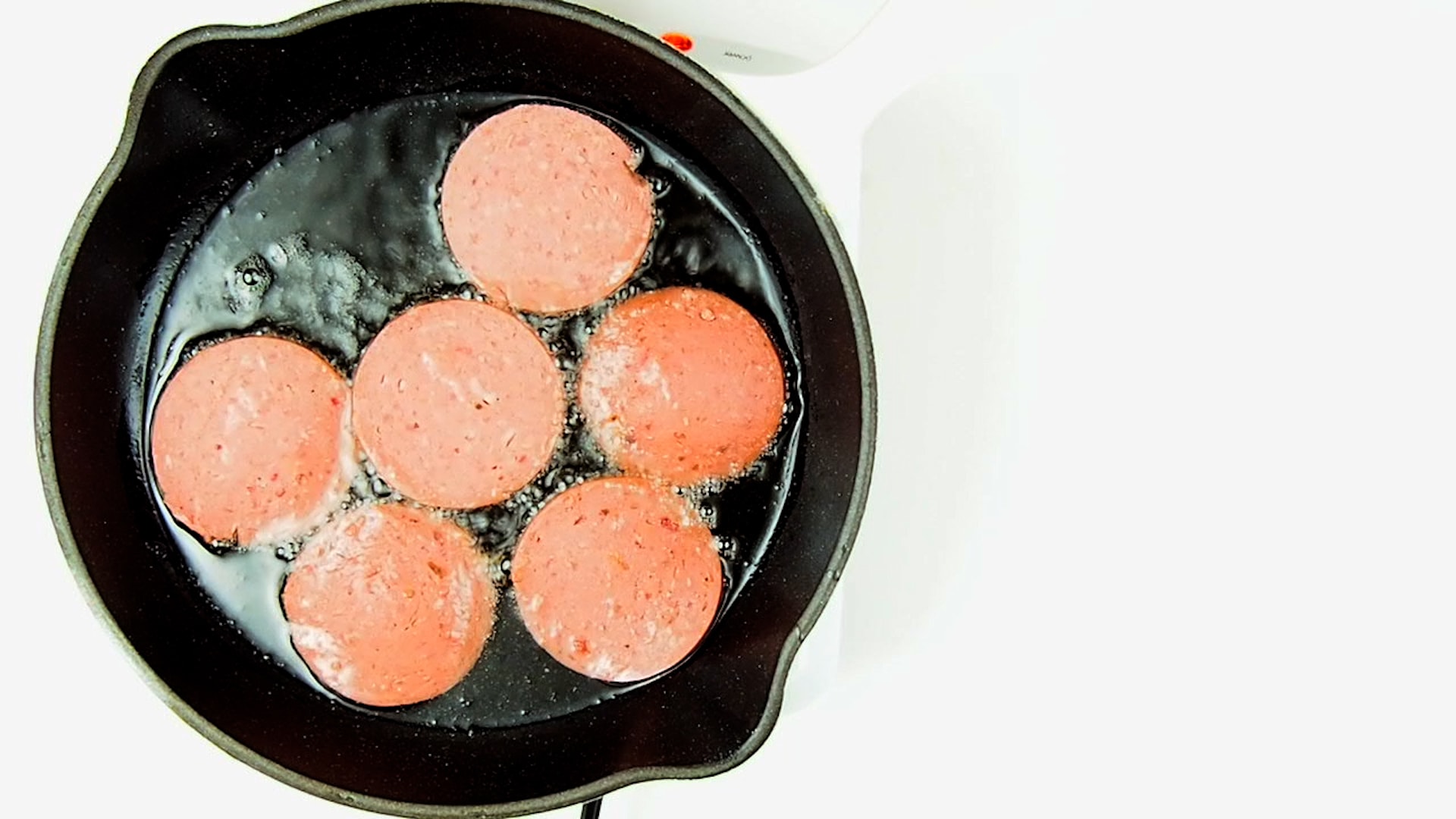 Fry the salami in the oil heated at medium-high heat, flipping mid-way until it's browned on both sides. Remove from the oil and let it rest on a paper towel to absorb excess oil.
Fry the salami in the oil heated at medium-high heat, flipping mid-way until it's browned on both sides. Remove from the oil and let it rest on a paper towel to absorb excess oil.
Video
Tips and Notes
Nutrition
Nutritional information is calculated automatically based on ingredients listed. Please consult your doctor if you need precise nutritional information.
References
- Vorágines Dominicanas. Elias Torres Sosa. Page Publishing, Inc. USA.
- Blood, Cement, and Prejudice and the Making of the Dominican-Haitian Border, 1937-1961 Edward Ramon Paulino Michigan State University. Department of History, 2001 Pg 180
- Historia de las elecciones en la República Dominicana, desde 1913 a 1998. Sandino Grullón. Kan sasana Printer. 1999. Pg 61.


